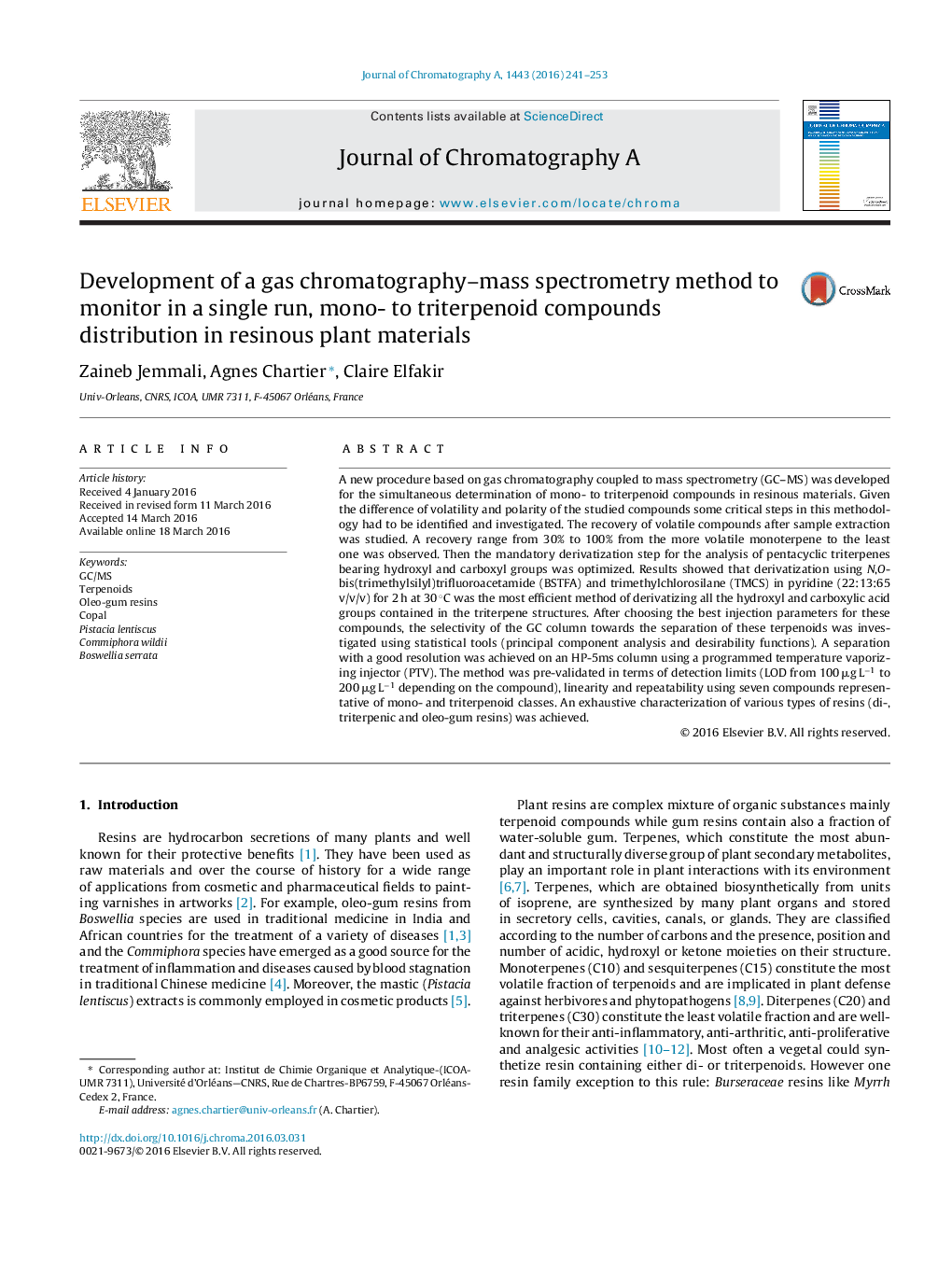| Article ID | Journal | Published Year | Pages | File Type |
|---|---|---|---|---|
| 1200505 | Journal of Chromatography A | 2016 | 13 Pages |
•Development of a GC–MS methodology suitable to analyze in a single run, mono- to triterpenoid compounds.•Optimization of the method: sample preparation and derivatization, injection technique and column selection.•Qualitative analyses and distribution of C10 to C30 terpenes in four resins using GC–MS.•Exhaustive characterization of Copal, Pistacia lentiscus, Boswellia serrata and Commiphora wildii resins.
A new procedure based on gas chromatography coupled to mass spectrometry (GC–MS) was developed for the simultaneous determination of mono- to triterpenoid compounds in resinous materials. Given the difference of volatility and polarity of the studied compounds some critical steps in this methodology had to be identified and investigated. The recovery of volatile compounds after sample extraction was studied. A recovery range from 30% to 100% from the more volatile monoterpene to the least one was observed. Then the mandatory derivatization step for the analysis of pentacyclic triterpenes bearing hydroxyl and carboxyl groups was optimized. Results showed that derivatization using N,O-bis(trimethylsilyl)trifluoroacetamide (BSTFA) and trimethylchlorosilane (TMCS) in pyridine (22:13:65 v/v/v) for 2 h at 30 °C was the most efficient method of derivatizing all the hydroxyl and carboxylic acid groups contained in the triterpene structures. After choosing the best injection parameters for these compounds, the selectivity of the GC column towards the separation of these terpenoids was investigated using statistical tools (principal component analysis and desirability functions). A separation with a good resolution was achieved on an HP-5ms column using a programmed temperature vaporizing injector (PTV). The method was pre-validated in terms of detection limits (LOD from 100 μg L−1 to 200 μg L−1 depending on the compound), linearity and repeatability using seven compounds representative of mono- and triterpenoid classes. An exhaustive characterization of various types of resins (di-, triterpenic and oleo-gum resins) was achieved.
